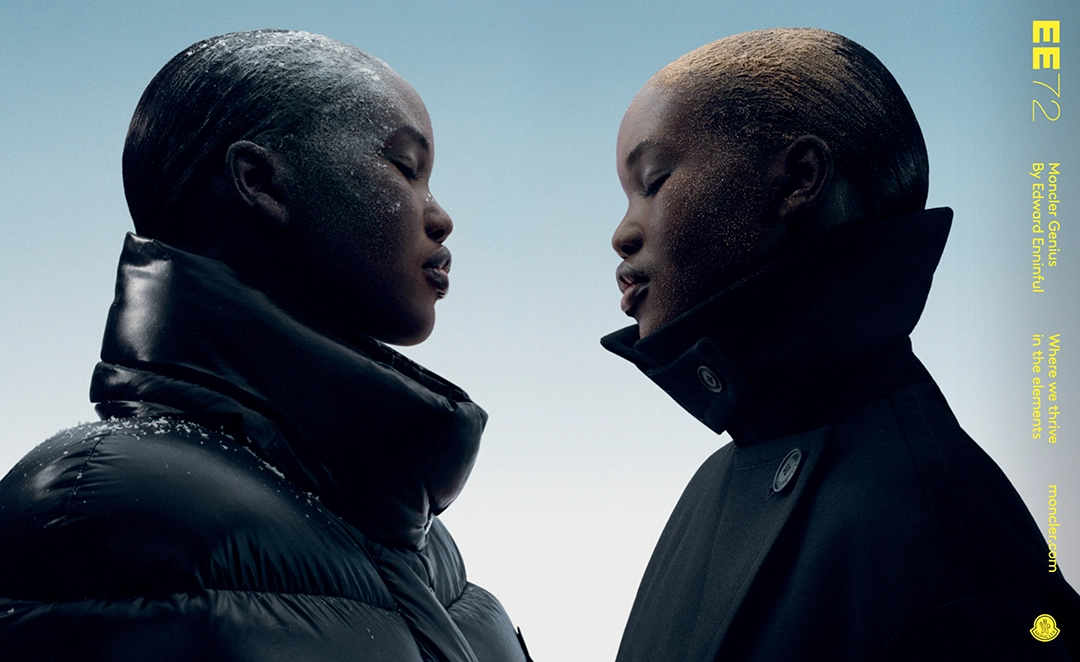
Where we thrive in the elements
For some time now, fashion—and particularly the advertising that shadows it—has put forth powerful images of Black women. Not the average African American—an archetype we might briefly allow ourselves to treat as stereotype—nor the women born in Europe, but those who come from, dwell in, or have only just arrived from the deepest heart of Africa.
Half-measures are over. What we now call exotic bears little resemblance to the attire with which Bettie Page once ignited the men of her time. Back then, fascination with the remote was resolved by a leopard-print bikini. The image sank deep into the social imagination, becoming emblematic of pin-up iconography. It was provocative, even savage. Yet the pose held a contrast: the almost childlike innocence of the model set against the untamed animal print. The woman projected a ferocity dissolved in candid smiles. Fierce, yet bendable… In other words, the dangerous power of such women could be contained, or so the first reading suggested, behind the bars of the domestic sphere.
Today, other strategies may rekindle similar ideas—though without recourse to such docile models.
This image belongs to a Moncler Genius campaign, specifically EE72, photographed by Edward Enninful. A winter fashion editorial under the motto Where we thrive in the elements, it appeared in Harper’s Bazaar USA – The Icons Issue this very September 2025.
The scene presents a woman in mirrored portrait. The same model—we need not be distracted by the sugary bait of twinhood. With eyes closed, she proposes a dialogue between the unfathomable interior and the outer world, between the subjective and the objective. Each figure bears the trace of her exposure to the elements.
On the left, frost upon the skin and a swollen coat evoke the severity of winter. On the right, a golden sheen and the coat’s slight rigidity suggest sand and tropical heat. A quilted surface and a high black collar recall the idea of armor against extreme climates. In close frontal view, the composition fixes cold as aesthetic and gesture as a sign of resistance. Fashion, nature, and body merge into an uncommon poetics. The external world looms as threat, while the body—doubled into opposing realms—asserts itself as a contemporary emblem of identity: resistance to the outside, the other. Far removed from the archaic messages of Bettie Page’s era.

Bettie Page
Viewed through European or North American eyes, such representation will inevitably reactivate historical tensions. For centuries the African body has been read as projector of desire and power. Ironically, in the dawn of modern advertising it was presented through servile or caricatural stereotypes. Not until the 1960s and ’70s, under the impulse of the civil rights movement in the United States and the expansion of the Black consumer market, did it begin to appear as both consumer and model on equal footing. The presence of racialized bodies grew, though always marked by the tension between real inclusion and symbolic exploitation.
If we compare these two projections of the exotic—though their underlying intentions may not be so different—we find a stark contrast between their gazes.
I write of this for another reason. Because from these Black women who now stir the guts of contemporary magazines there comes to me a breath of overwhelming nature. Real nature, legitimate power, authentic force. A resonant murmur, like cataracts heard from afar. Inspiring.
The years make us less tolerant of “what seems to be,” of “what tastes like…” And since our time grows shorter to savor the fruits that—in their fullest generosity—Mother Earth has ripened for us, we insist on what truly is, on what cannot be imitated.

Bettie Page









Comments powered by Talkyard.